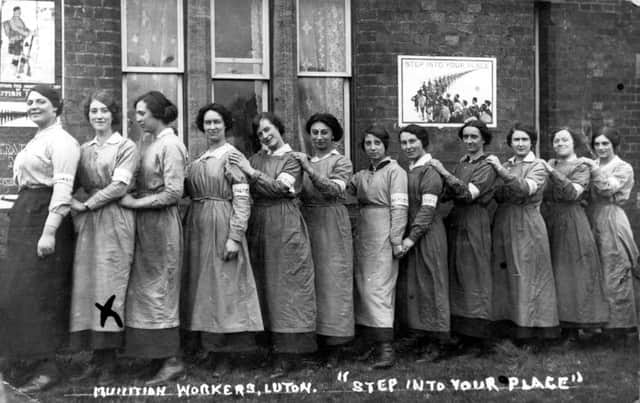Munitionettes in danger every working day in WW1


By June 1917, about 80 per cent of the weaponry and ammunition used by the British Army was being made by munitionettes. They included those employed at Luton engineering firm George Kent Ltd’s factory in Biscot Road.
The women spent long shifts filling shells and converting fuses, but females in the industry were paid on average less than half of what the men earned. Munitionettes worked with hazardous chemicals on a daily basis without adequate protection.
Advertisement
Hide AdAdvertisement
Hide AdChemicals included trinitroluene (TNT) and prolonged exposure to sulphuric acid turned the women’s skin colour yellow. They were popularly called ‘canary girls’.
Another ever-present hazard was explosions and many workers were killed or injured. Among the victims was May Emma Constable, who died on March 7, 1918 – six days after an explosion at the Luton munitions factory.
The 22-year-old from Fenny Stratford suffered burns and she was taken to Luton’s Bute Hospital where she died from blood poisoning.
But the Luton News did not report the incident at the time. Newspapers were not encouraged to publicise munitions explosions or deaths as it would affect the morale of the civilian population.
May’s funeral cortege was led by between 60 and 70 of her fellow girl workers, all wearing their factory uniform. The coffin was draped with the Union Jack.